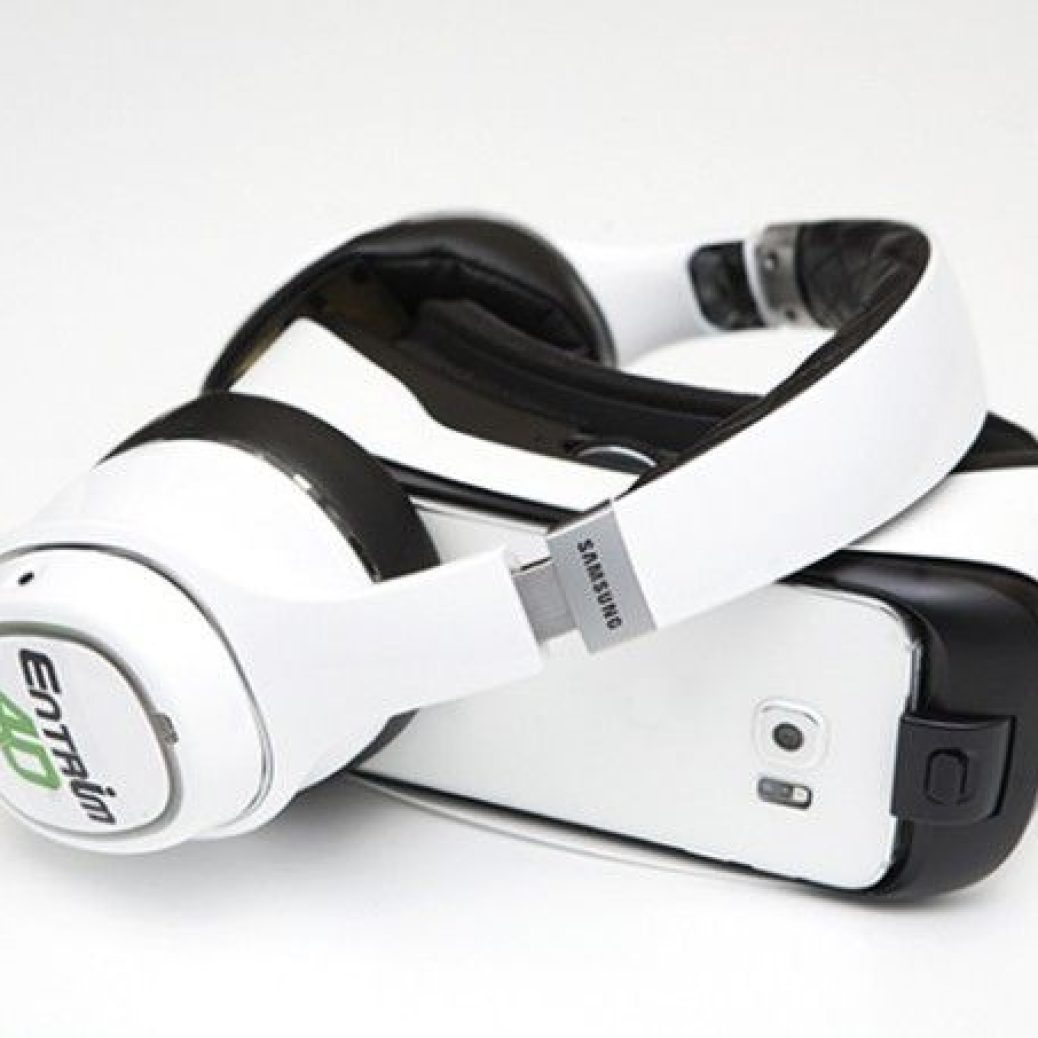Samsung’s New Headphones Trick Your Inner Ear to Move You in VR
Samsung’s to bring a new set of experimental headphones to SXSW that uses electrical impulses to fool your inner ear into thinking your body is physically moving. What’s more, they seem to be pitching the new headgear for virtual reality use alongside the company’s Gear VR headset.Samsung’s C-labs popped up on the Road to VR radar back in January when they announced their Rink experimental motion controllers for use with the Gear VR using electromagnetic fields to track the movement of your hands in 3D space. Despite looking very polished indeed, our hands-on time with the devices confirmed their R&D status.
Now comes a new set of hardware, again straight from C-Labs, and they promise to provide another piece in the player immersion puzzle by physically stimulating the inner ear to fool the brain into thinking they’re actually moving – a set of headphones called Entrim 4D.
The process in question is known as Galvanic Vestibular Stimulation (GVS) and it’s long been a technique talked about in the virtual reality community as a way to bridge the gap left by visually and aurally induced psychological immersion, or presence. That is, you can only do so much with sight and sound, no matter how good your picture and audio is, you won’t physically feel movement with those methods alone.
GVS uses tiny electrical impulses to stimulate your vestibular system, the sensory system of your inner ear that controls your sense of balance and inertia, into thinking you’re moving when you’re not. The practical upshot is, if you’re able to take output from a game you can in theory simulate the physical sensation of travelling at speed around a race track or riding a roller coaster for example.
The Entrim 4D is describes as a “motion headset that lets you feel (and not just see) VR”. The headset contains electrodes that “correspond with movement data input by engineers,” thus your physical responses to an on-screen event.
“Virtual reality shouldn’t be experienced only with the eyes,” says Steve Jung, Creative Leader of the project. “With Entrim 4D, we hope that people can experience VR the way it was meant to be—with their whole bodies.”
Counter-intuitive as it may sound, this kind of trickery of the inner ear may help reduce the chances of nausea felt by those who suffer from the disconnect felt when a virtual reality experience convinces your mind you’re moving when your body says otherwise. By bringing your physical sensations in line with those in the virtual world, in theory that disconnect is lessened and nausea diminished. In theory.
Entrim 4D has been declared as “safe”, having been tested on some 1500 human guinea pigs, resulting in the development of 30 ‘movement patterns’ – stimulation presets to bring upon certain sensations.






